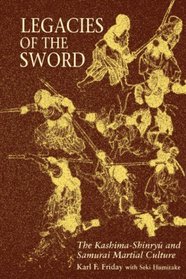Search -
Legacies of the Sword: The Kashima-Shinryu and Samurai Martial Culture
Legacies of the Sword The KashimaShinryu and Samurai Martial Culture
Author:
Western scholars and educators are generally far less familiar with the samurai in his original--and, ostensibly, primary--role as warrior and master of arms than in his other functions as landowner, feudal lord, literateur, or philosopher. Yet any attempt to comprehend fully the samurai without considering his military abilities and training (b... more »
Author:
Western scholars and educators are generally far less familiar with the samurai in his original--and, ostensibly, primary--role as warrior and master of arms than in his other functions as landowner, feudal lord, literateur, or philosopher. Yet any attempt to comprehend fully the samurai without considering his military abilities and training (b... more »
ISBN-13: 9780824818791
ISBN-10: 0824818792
Publication Date: 7/1/1997
Pages: 248
Rating: ?
ISBN-10: 0824818792
Publication Date: 7/1/1997
Pages: 248
Rating: ?
0 stars, based on 0 rating
Publisher: University of Hawaii Press
Book Type: Paperback
Other Versions: Hardcover
Members Wishing: 1
Reviews: Amazon | Write a Review
Book Type: Paperback
Other Versions: Hardcover
Members Wishing: 1
Reviews: Amazon | Write a Review
Genres:
- Arts & Photography >> History & Criticism >> Regional >> Middle Eastern
- History >> Asia >> Japan
- Sports & Outdoors >> Individual Sports >> Martial Arts >> General
- Sports & Outdoors >> General
- Nonfiction >> Social Sciences >> Anthropology >> Cultural




